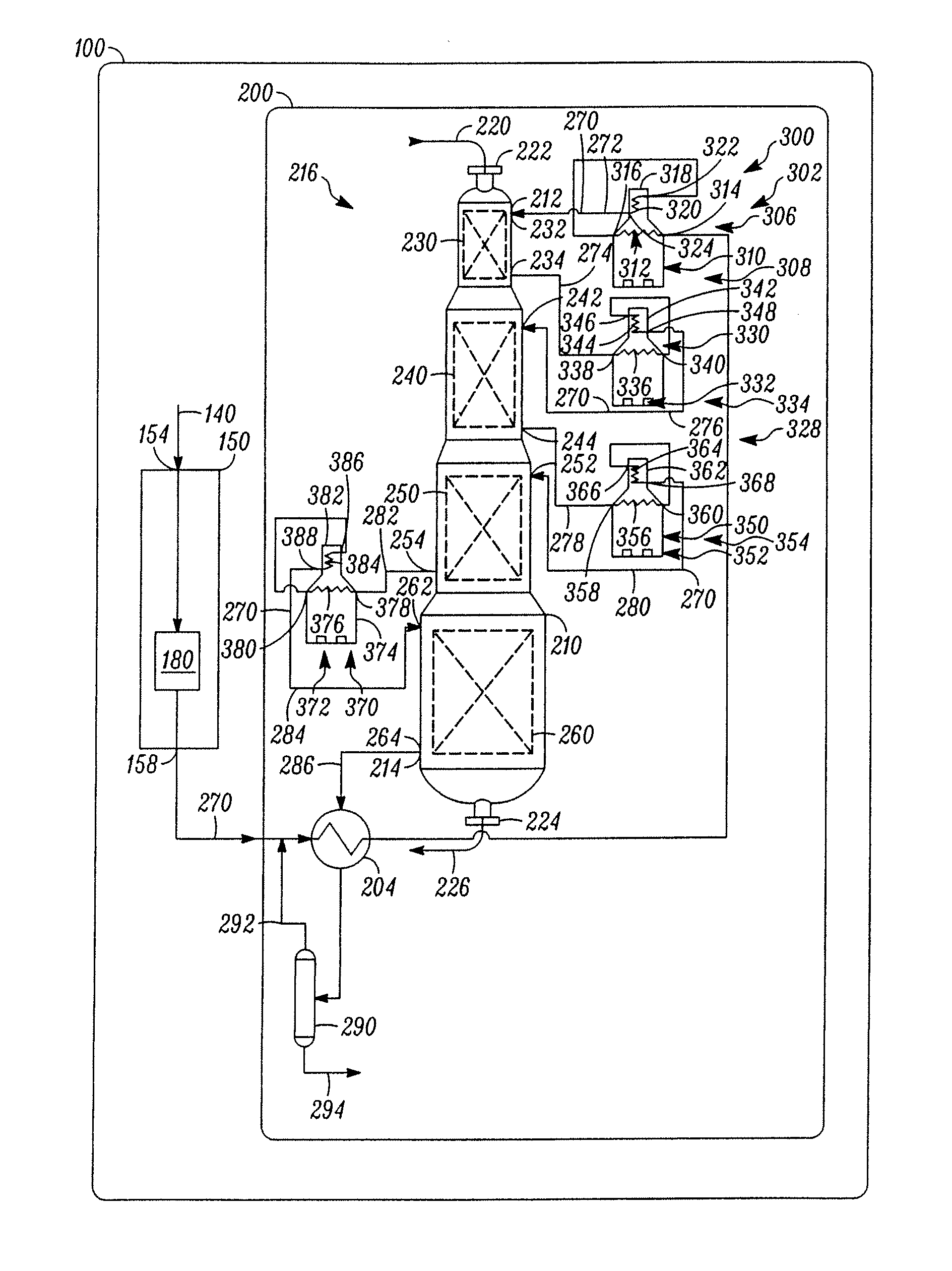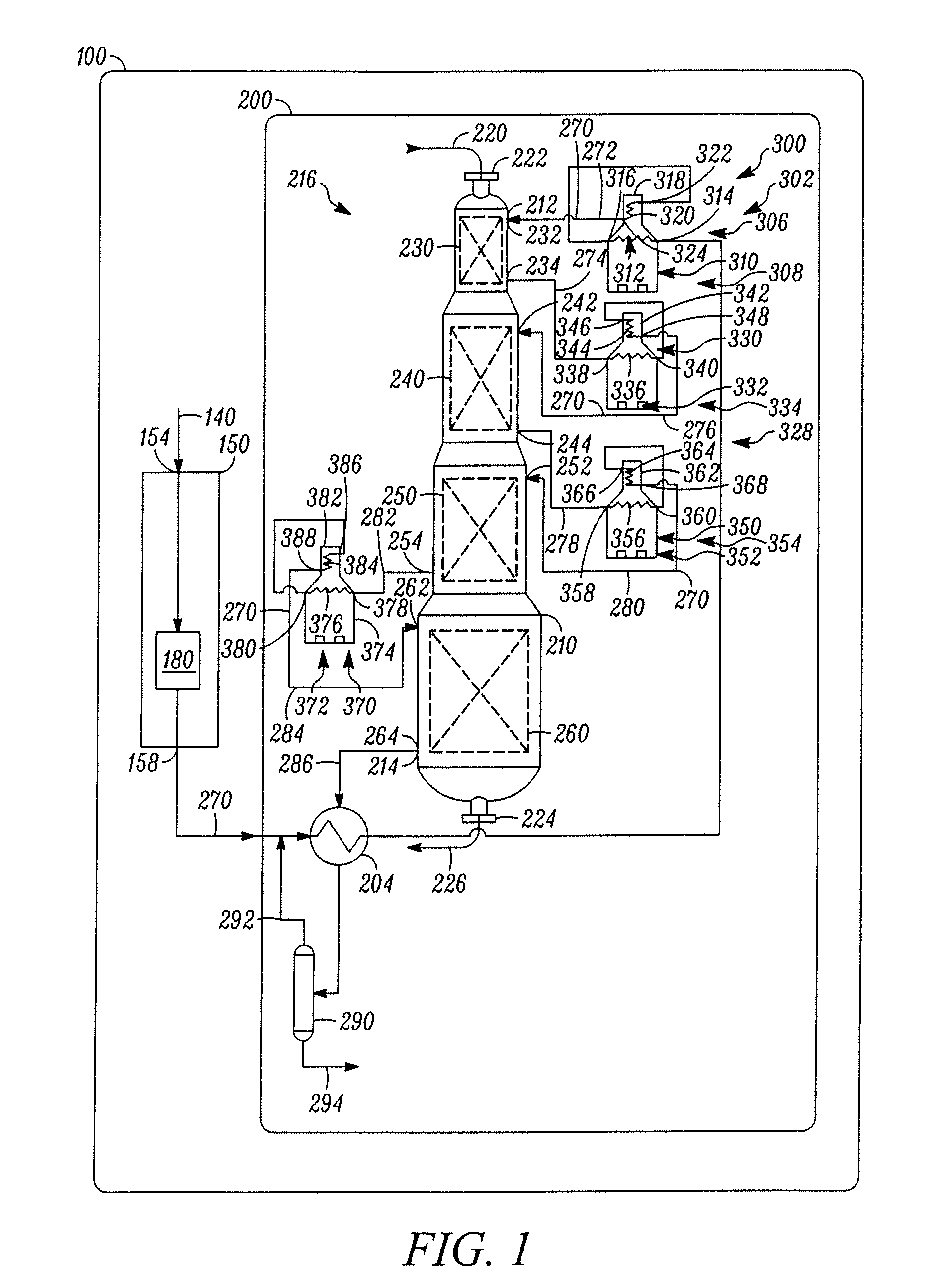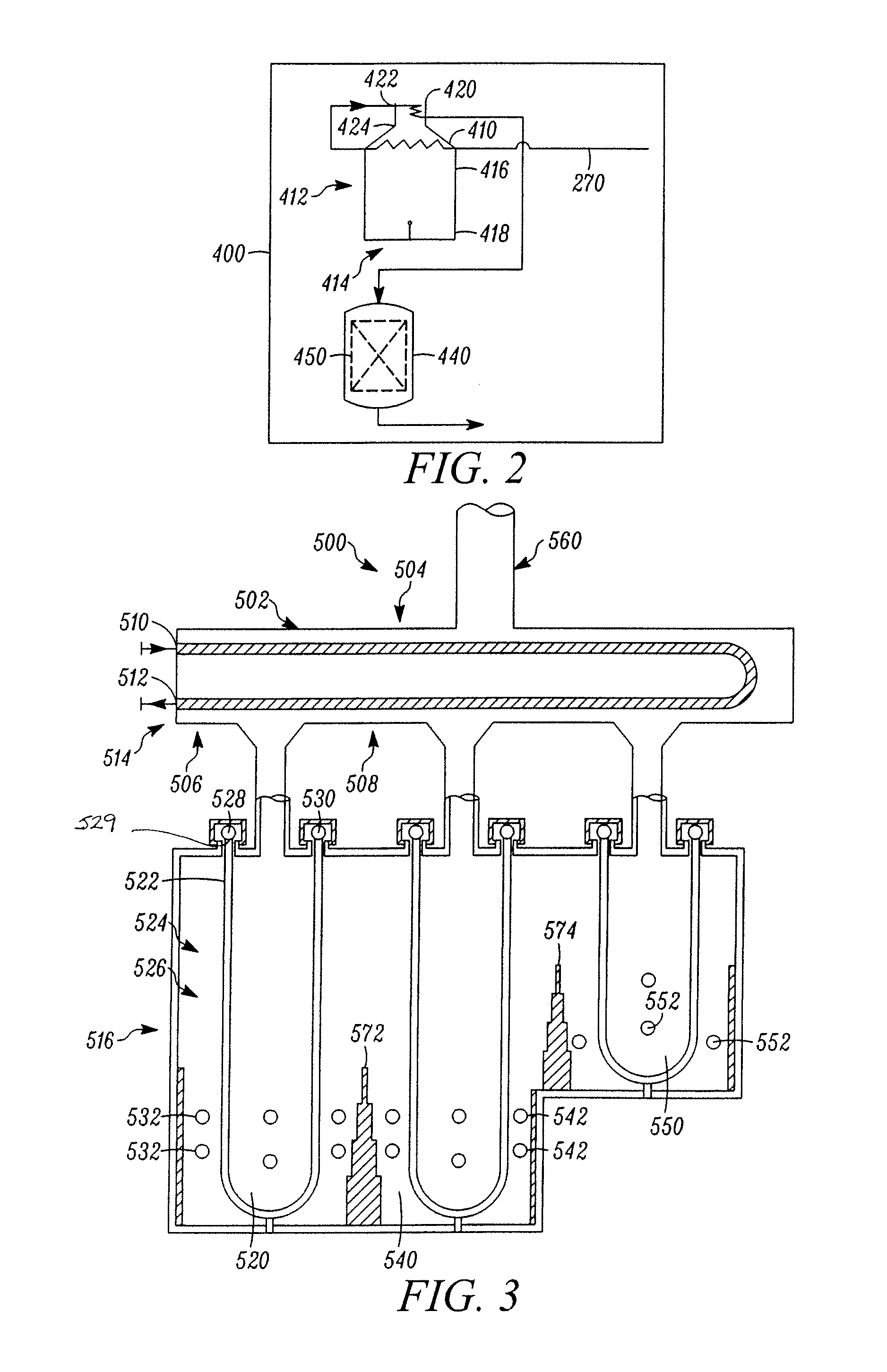Fired heater for a hydrocarbon conversion process
a hydrocarbon conversion and heater technology, applied in steam boilers, multiple-effect evaporation, machines/engines, etc., can solve the problems of reducing the radiant efficiency of the heater, reducing the capital cost of the equipment and shutdown time, and reducing the potential for metal catalytic coking. , to achieve the effect of reducing the potential for metal catalytic coking, reducing the capital cost of equipment and shutdown time, and increasing the reliability of the subsequent reactor zon
- Summary
- Abstract
- Description
- Claims
- Application Information
AI Technical Summary
Benefits of technology
Problems solved by technology
Method used
Image
Examples
Embodiment Construction
[0032]Generally, a catalytic conversion of a hydrocarbon-containing reactant stream in a reaction system has at least two reaction zones where the reactant stream flows serially through the reaction zones. Reaction systems having multiple zones generally take one of two forms: a side-by-side form or a stacked form. In the side-by-side form, multiple and separate reaction vessels, each that can include a reaction zone, may be placed along side each other. In the stacked form, one common reaction vessel can contain multiple and separate reaction zones that may be placed on top of each other. In both reaction systems, there can be intermediate heating or cooling between the reaction zones, depending on whether the reactions can be endothermic or exothermic.
[0033]Although the reaction zones can include any number of arrangements for hydrocarbon flow such as downflow, upflow, and crossflow, the most common reaction zone to which this invention is applied may be radial flow. A radial flow...
PUM
| Property | Measurement | Unit |
|---|---|---|
| temperature | aaaaa | aaaaa |
| boiling point | aaaaa | aaaaa |
| end boiling point | aaaaa | aaaaa |
Abstract
Description
Claims
Application Information
 Login to View More
Login to View More - R&D
- Intellectual Property
- Life Sciences
- Materials
- Tech Scout
- Unparalleled Data Quality
- Higher Quality Content
- 60% Fewer Hallucinations
Browse by: Latest US Patents, China's latest patents, Technical Efficacy Thesaurus, Application Domain, Technology Topic, Popular Technical Reports.
© 2025 PatSnap. All rights reserved.Legal|Privacy policy|Modern Slavery Act Transparency Statement|Sitemap|About US| Contact US: help@patsnap.com



